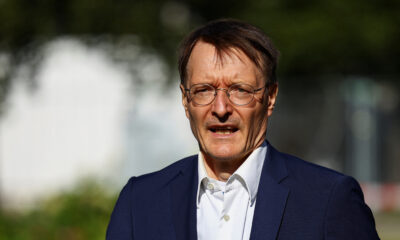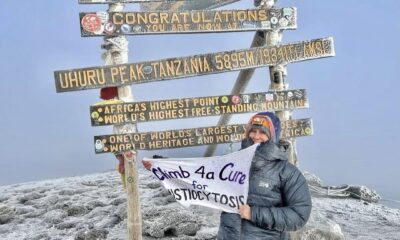Tragedy, loss and hope: Overseeing New York hospitals during a pandemic | ReutersNEW YORK (Reuters) –
No matter who you are, it is a safe bet that this past year has been challenging and traumatic. Now imagine that you faced a pandemic while in charge of a New York City hospital that is one of the largest in the nation. Dr Steven Corwin, president and CEO of NewYork-Presbyterian, has helped steer a network of 10 hospital campuses through the biggest public health crisis in generations. Corwin spoke to Reuters about the lessons learned from this period of tragedy, loss – and ultimately, hope. Q: Years ago, could you have ever foreseen what has happened to this country over the last year? A: Part of the issue for us as a country, let alone hospital systems, was a failure of imagination. There were some warning signs like swine flu and Ebola, but pandemic preparedness was not the highest item on everyone’s list. It obviously should have been much higher. Q: How has your system been able to handle COVID-19? A: We started to bear the brunt of it in March and April into early May, when things were really horrific. We were stretched to the absolute maximum. We normally operate 450 ICU beds; we had to expand to 900. We normally use 4,000 surgical masks a day; we were using 100,000.It was overwhelming, and thankfully we got through it, but unfortunately in recent months the virus has been accelerating all over the country. Q: COVID-19 has forced so many companies and industries to rethink the way they do things – is the same true for hospitals? A: Our antennae are up, in terms of thinking about pandemics and what the next one could be. We have much more expertise in our hospital system now, and we use outside experts to help identify threats. We have also changed our business model, from just-in-time to just-in-case. We need reserves and flexibility, not just in physical spaces but in equipment, training and how we deploy staff. We have also learned that the system as a whole is more resilient than a single hospital. Everything is so interconnected and interdependent, that if one hospital is getting overwhelmed, a crisis is less likely if other parts of the system are helping out. Q: How has COVID-19 helped reveal a lot of systemic inequities in our society? A: This crisis has been a real eye-opener. Coupled with everything happening around the country, such as with the George Floyd protests, we felt we needed to double down on our commitments. We want to eliminate any disparities – for instance for Black maternal mortality, for cancer outcomes, and for children undergoing surgery. Disparities in mortality for people of color spurred us to make sure we have an ongoing and significant effort in health equity, through our Center for Health Justice. Q: Is telehealth revolutionizing how you do business? A: Before, 3% of hospital visits were done by telehealth. During the pandemic, it was over 50%. Now it has settled at around 25% of visits, but I think telehealth is here to stay. It’s not a fad. Q: With so much suffering going on, how do you make sure your own workers are OK? A: They’re not. It’s heartbreaking, to be honest. March 1 will be 12 months of this. People are tired, and there’s a cumulative trauma effect. Mortality may be less now, but they are still seeing a lot of people die. It has affected everybody, but some more than others, like the frontline workers. They did the impossible in the spring, and they feel like they’re reliving it again right now. There is nothing more troubling to a care provider than to be the person holding an iPhone next to someone who is passing away. It’s extremely traumatic and incredibly humbling. We talk to doctors and nurses about it, and they remember that moment. It haunts their dreams. Q: With so many vaccine options coming online, are you hopeful? A: It’s a tremendous scientific achievement to get vaccines out that quickly, and there is light at the end of the tunnel. But everyone needs to understand this is a global pandemic, and vaccines have to be distributed worldwide – because the more the virus circulates, the more likely there could be mutations. I think it will take a few more months to really get this under control. We have the first-team offense on the field now. They are digging in, and good things are starting to happen. #manchesterunited#manchestercity#HealthForAll#HealthBroadcastingService#tampabaybuccaneers#Covid-19#johnmoxley#newyorkrangers #dallasmavericks#losangeleslakers#HealthBroadcastingServiceInPublicHealthPartnership#mikedean#dallasmavericks#denisevanouten#liverpoolfc#obesity#deutscherwetterdienst#washingtonfootballteam#jamesdean#ginacarano#ohiostatebuckeye#sacramentokings#lasvegasraiders#sanantoniospurs#atleticomadrid#tottenhamhotspur#fcbarcelona#unitedstatespresidentialelection20202021#ozankabak#meghanmarkle #nokiastock#liverpoolfc#ryanreynolds#momentswithannie #losangeleslakers #weightloss#gonzagabulldogs #jonnyclayton#losangelesclippers#pameladiaz#googleboxhttps://www.reuters.com/…/us-change-suite…












